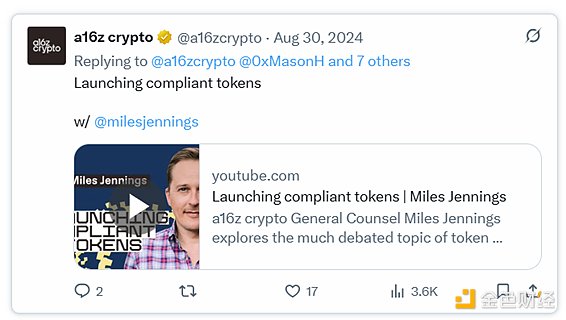Author: Sam Lehman, Symbolic Capital Investor; Translation: Jinse Finance xiaozou
In the past few months, I have personally witnessed four well-known crypto funds either turning into pure liquidity management or quietly shutting down. Many top-tier institutions are struggling to raise funds. Many investors I know have completely exited the market - some have shifted to the AI track, while others have directly retired (not just because they earned enough retirement funds from AI meme coins). This is no coincidence, but a fundamental transformation in the industry's underlying logic.
I believe the crypto world is bidding farewell to its wild and immature phase and entering a steady, mature period. The chaotic order previously filled with short-termism, speculative trading, and VC arbitrage is giving way to a more mature and structured new era. This transformation will generate far-reaching impacts, and sadly, most Web3 venture capital firms are not prepared to welcome it.
VCs always love to talk about the importance of "adaptability" to entrepreneurs. Now, it's their turn to make changes.

Here are my thoughts on the industry transformation: Why have traditional crypto VC strategies become ineffective? How will the new paradigm rise? Which investors will stand out in the next stage?
I. Traditional Web3 VC Model
The past crypto VC model basically followed this routine:
• Identify projects about 1 year before token issuance, with connections to top CEXs (some funds used to market themselves with "management team from top exchanges" as a selling point, with their so-called value-added service being able to sniff out which projects could be listed in advance. Now, if any fund is still selling this pitch, don't believe it...)
• Invest through SAFT agreements (and casually grab an advisor title)
• Immediately sell to retail investors after the project's token generation event (TGE) - the lockup rules at the time were much looser than today's standard of "1-year lock-up + 3-year linear release". During bull market cycles, retail investors always had an insatiable appetite for the Nth VC coin.
This approach encouraged numerous bad behaviors: First, many VCs raised 5-year funds - only half the standard duration of Web2 funds. This structure was destined to fail in supporting long-term builders. How can you invest in projects requiring a 10-year development path when the fund's lifespan is only 5 years? On the other hand, founders receiving such funds were forced to accelerate liquidity within a limited timeline, often rushing to issue tokens before validating product-market fit (PMF).
Fortunately, this model is rapidly dying. By 2025, we see an increasingly mature market with gradually clear regulations, traditional financial institutions re-entering, and industry focus shifting to fundamentals, real utility, and sustainable business models.
II. The Shape of Growth
The future crypto industry will require investors and entrepreneurs to have greater patience. Market maturity will bring the following significant changes:
• Longer Lock-up Periods: Most CEXs are adopting a new standard of "1-year lock-up + 2-3 years linear release".
• Fundamentals First: The proliferation of Altcoins and retail investor specialization will force projects to break through based on real revenue, moats, and profit pathways.
• Diverse Exit Paths: Increased feasibility of crypto company IPOs, more meaningful M&A cases that can create substantial impact, providing new liquidity channels independent of token issuance.
I dare say most Web3 VC firms will struggle to adapt to the new normal. From my observations, institutions that realize this are either exiting, shifting to liquidity investments, or raising structured funds that align with new rules. Those institutions that can consistently support the new model will enter a golden age.
III. Winners in the Changing Landscape
Note: The new landscape represents huge opportunities for many funds. Comprehensive institutions that can support the full cycle from seed round to IPO will dominate the blue ocean - currently, fewer than 10 crypto funds can lead Series A or higher financing. More critically, institutions capable of guiding IPOs are rare: How many funds truly prioritize (and implement) proper corporate governance? Are familiar with roadshow processes and investor relations? Probably very few... But for funds that have consistently maintained high standards and systematic operations, now is a magical investment moment.
Early investors' roles are also evolving. Previously, seed round investors only needed to help build community and capture mind share to cash out before product formation. Now they must deeply participate in product-market matching, user research, and foundational work, rather than urging project teams to issue tokens for quick gains.

It's worth mentioning that in 2023, Miles Jennings, a16z crypto's chief legal counsel, called for "finding PMF before token issuance", which was surprisingly controversial at the time. Fortunately, as the focus on fundamentals increases, the industry is returning to rationality, which will give birth to more enterprises focused on practical business (Note: current experiments with "micro-scale token issuance" are worth watching, though the feasibility of this model remains to be seen).
IV. Embracing Maturity
The maturity of the crypto industry is not a bad thing, but a necessary path for technology to reach mainstream application. Projects being built now are more practical, more focused on real problems, and more likely to create lasting value.
For VC firms, this is both a challenge and an opportunity. Institutions that can adjust strategies to adapt to long cycles, focus on fundamentals rather than hype, and provide truly value-added services will thrive. Players who cling to outdated routines will ultimately be abandoned by entrepreneurs choosing new paradigm funds.
The crypto industry is growing. The question is: Can VCs grow along with it?






